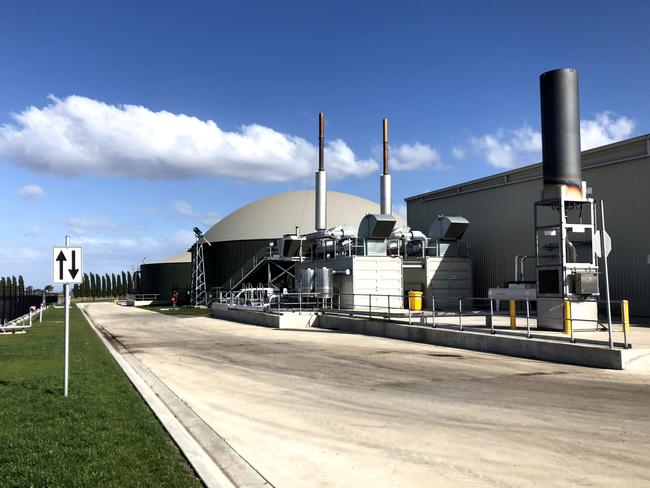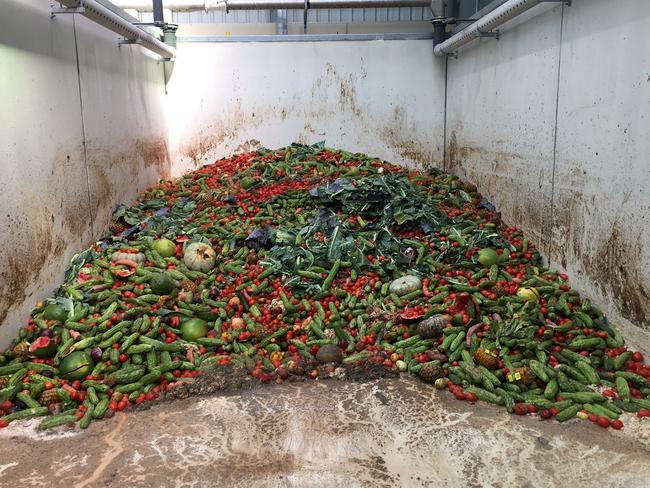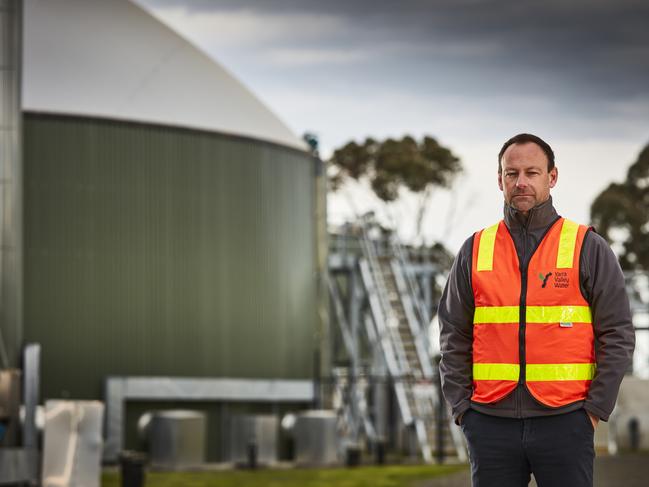How 34,500 tonnes of food waste is powering Melbourne homes
Unwanted airline food, vaccine by-products and rotten vegetables are among the 140 tonnes of waste being converted to energy in Melbourne’s north each week.

North
Don't miss out on the headlines from North. Followed categories will be added to My News.
Less than two years after Victoria’s first waste-to-energy facility opened in Wollert, the plant is proving the system of transforming food to power is a sustainable way to address climate change and food waste.
Sitting next to Yarra Valley Water’s Aurora sewage treatment plant, the ReWaste factory receives about 140 tonnes of waste from 20 food manufacturers, supermarkets, shopping centres, and fruit and vegetable wholesalers each day.

ReWaste services manager Damien Bassett said among the rotting apple cores and expired products, the four full-time staff members at the facility also converted airline catering waste, dehydrated egg waste and vaccine by-products into energy.
RELATED
WASTE TO ENERGY PITCH TO COUNCIL
SUPPORT FOR RENEWABLE ENERGY INCENTIVES
“ReWaste treats food waste via a biological process called anaerobic digestion,” waste to energy services manager Damien Bassett said.
“This process produces biogas, mainly made up of methane, which is converted to electricity via our combined heat and power engines.
“This electricity is then used to power our facility and our neighbouring treatment plant with the remainder being exported to the grid.”
MORE NEWS
SPINAL INJURY HUB TO OFFER HOLISTIC CARE
WHITTLESEA COUNCIL NOT HAPPY WITH KAUFLAND
EPPING WOMAN TACKLES 100KM TRAILWALKER COURSE
The 34,500 tonnes of waste processed since the plant opened produced 7.8 million kWh of energy, 70 per cent of which has been fed back to the grid.
The amount of waste diverted from the landfill equated to growing over 1.2 million tree seedlings across 10 years, Mr Bassett said.
Yarra Valley Water managing director Pat McCafferty said the facility was proving so efficient plans had already begun for a second facility, about 1.5 times bigger than the current one, to be operational within “the next couple of years”.

When both facilities run at full capacity, they would generate 50 per cent of YVW’s energy needs.
Combined with large scale solar projects, the Wollert plants would enable YVW to operate on 100 per cent renewable energy by 2025, Mr McCafferty said.


